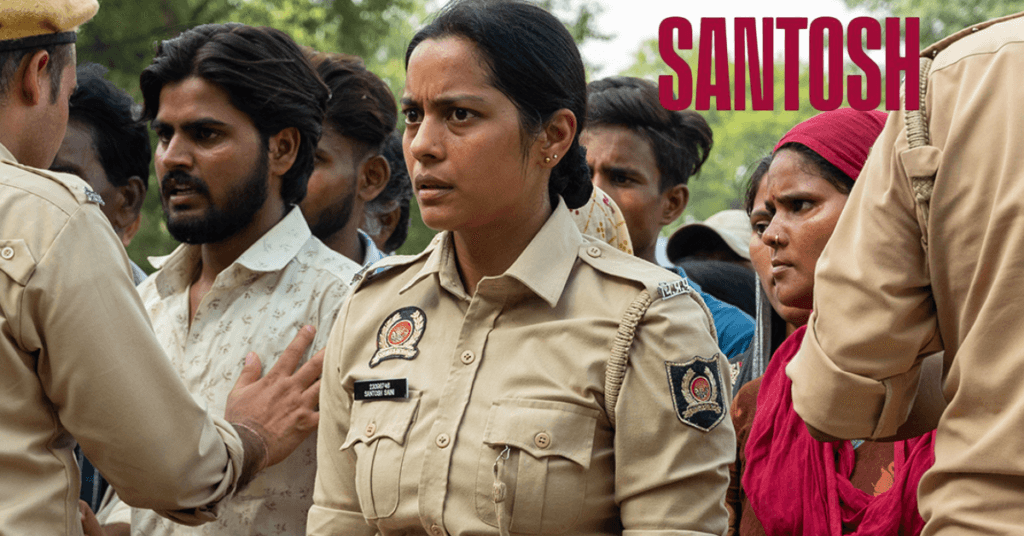A Critically Acclaimed Film Faces a Ban in India;
The highly acclaimed Hindi-language film Santosh, directed by British-Indian filmmaker Sandhya Suri, has been blocked from theatrical release in India by the Central Board of Film Certification (CBFC). The film, which explores police brutality, caste discrimination, and misogyny within the Indian police force, has received widespread global praise but now faces restrictions at home.
Despite premiering at the Cannes Film Festival, receiving a BAFTA nomination, and being the UK’s official submission for Best International Feature at the Oscars, Santosh is unlikely to be released in Indian cinemas.
Why Did Santosh Get Banned?
The CBFC refused to certify Santosh for theatrical release, citing its “negative portrayal of law enforcement.” Reports suggest the board demanded extensive cuts, which director Sandhya Suri deemed “impossible” to implement without compromising the film’s core message. The requested changes targeted key scenes related to caste violence, gender discrimination, and police misconduct, spanning multiple pages of revisions.
What Santosh is About
Set in northern India, Santosh follows a young widow (played by Shahana Goswami) who joins the police force after her husband’s death. While investigating the murder of a Dalit girl, she uncovers deep-seated corruption, misogyny, and caste discrimination within law enforcement. The film offers an unfiltered look at police brutality and the challenges faced by marginalized communities, particularly lower-caste women.
Global Acclaim vs. Domestic Roadblocks
Internationally, Santosh has been celebrated for its bold storytelling and social commentary. It was nominated for a BAFTA for Best Debut Feature, while lead actress Shahana Goswami won Best Actress at the Asian Film Awards. Critics have praised the film’s realism and willingness to address uncomfortable truths about Indian society.
However, India’s film censorship landscape has grown more restrictive in recent years. Films addressing politically sensitive topics such as caste discrimination, religious tensions, and institutional corruption often face bans, legal battles, or forced edits before release. While Bollywood has frequently portrayed the police force in an action-hero light, Santosh takes a starkly realistic approach, which may have unsettled censors.
A Pattern of Increasing Censorship
The banning of Santosh reflects a broader trend of increasing censorship in Indian cinema. Filmmakers who tackle controversial themes often face protests, political pressure, or outright bans. While police brutality has been depicted in Indian films before, Santosh stands out because of its realism and refusal to glorify law enforcement figures.
Suri herself has questioned why Santosh was targeted when other Indian films have shown police violence in a more stylized and sensationalized way. “Maybe there’s something about this film that is troubling because there is no single hero,” she remarked. “Everybody is morally compromised.”
What’s Next for Santosh?
Unlike in some countries where censorship decisions can be appealed, the CBFC’s ruling is final unless challenged in court. While Suri has expressed disappointment, she remains hopeful that Indian audiences will eventually have access to the film.
For now, Santosh is being released in UK cinemas, where it continues to gain recognition. Whether streaming platforms in India will pick up the film remains uncertain, but the controversy surrounding its ban has only intensified interest in its story.
The Bigger Picture
The censorship of Santosh raises pressing questions about artistic freedom, representation, and the role of cinema in exposing harsh realities. While Indian audiences are currently being denied the opportunity to see the film, its impact continues to grow globally. As debates on censorship and creative expression in India persist, Santosh serves as a stark reminder of the power—and risks—of filmmaking that dares to challenge the status quo.
Read More:

























